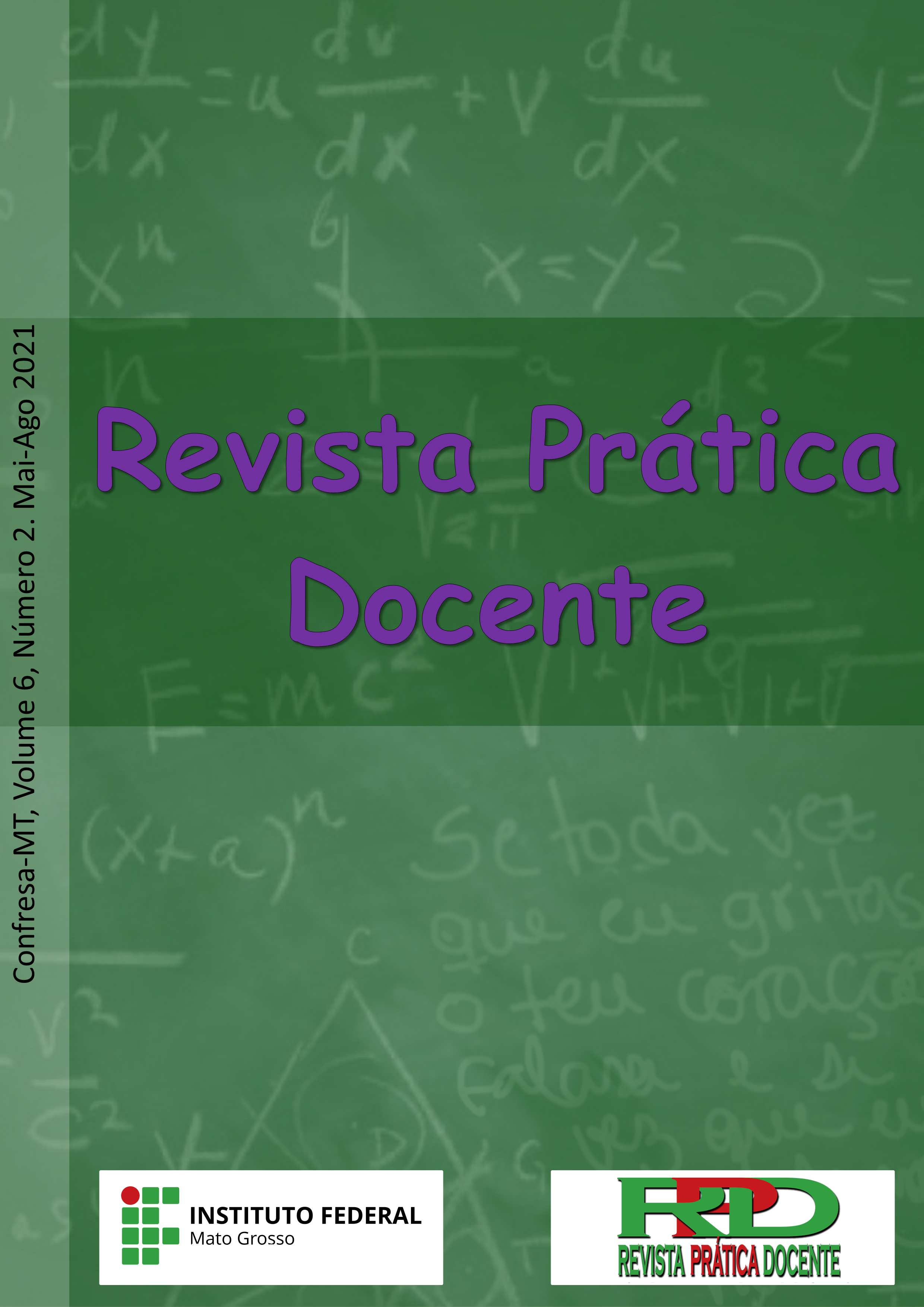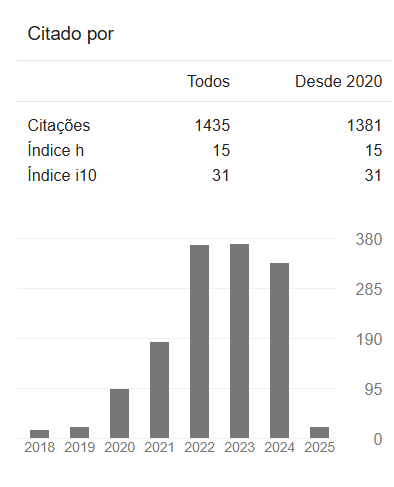GAMEBOOKS DEVELOPMENT USING TWINE SOFTWARE IN THE SCHOOL CONTENT TEACHING AND LEARNING CONTEXT
DOI:
10.23926/RPD.2021.v6.n2.e039.id1143Keywords:
Gamebook, Narrative, Courseware, Twine SoftwareAbstract
Faced with the perspective of developing narratives in digital didactic materials from gamebooks aimed at the educational context, the objective is to describe how the narratives produced by higher education students when building gamebooks using the Twine software show the way they think teaching and learning school content. The research is qualitatively based on a Case Study. Three gamebooks developed by students from a Public Higher Education Institution (PHEI) are analyzed. Data collection occurs from two instruments: preparation script and finalized gamebook. Through methodological triangulation, the data analysis compared the information obtained in the two instruments, plus the theoretical framework, supported by the Discursive Textual Analysis. It´s perceptive that in all the narrative structures, the school contents were not presented in an expository way; non-linear narratives generated activities that were close to a constructionist teaching proposal.
Downloads
Metrics
References
ALVES, M. M.; TEIXEIRA, O. Gamificação e objetos de aprendizagem: elementos da gamificação no design de jogos de aprendizagem. In: FADEL, L. M.; ULBRICHT, V. R.; BATISTA, C. R.; VANZIN, T. (org.). Gamificação na educação. São Paulo: Pimenta Cultural, 2014. cap. 5, p. 122-142.
ALVES, M. A. Tudo o que o seu mestre mandar: a figuração do narrador e do leitor nos textos interativos. 1997. 225f. Tese (Doutorado em Literatura Brasileira) – Faculdade de Letras, Universidade Federal do Rio de Janeiro, Rio de Janeiro, 1997. Disponível em: http://bdtd.ibict.br/vufind/Record/UFRJ_772a3cc1676eac3cbce5bee87ab0d17e. Acesso em: 22 jan. 2021.
BARTHES, R. Escritores, intelectuais, professores e outros ensaios. 1. ed. Lisboa: Presença, 1975. 223 p.
BRASIL. Base Nacional Comum Curricular. Brasília: MEC/Secretaria de Educação Básica, 2018. 600 p.
CAVALLARI, V. M. (org.). Recreação em ação. 2. ed. São Paulo: Ícone, 2013. 272 p.
CHAMORRO, M. del C. (org). Didáctica de las Matemáticas para Primaria. 1. ed. Madrid: Pearson Educación, 2003. 368 p.
DIAS, J. C. A. da C. Subsídios para a compreensão da escrita de ficção hipertextual com o Twine em contexto de aprendizagem de uma língua estrangeira: o ambiente social e o ambiente físico da escrita. 2019. Disponível em: https://eprints.ucm.es/50700/1/DA%20COSTA_Subs%C3%ADdios%20para%20a%20compreens%C3%A3o%20da%20escrita%20de%20fic%C3%A7%C3%A3o%20hipertextual%20com%20o%20Twine.pdf. Acesso em: 10 jul. 2020.
ENGSTRÖM, H.; BRUSK, J.; ERLANDSSOM, P. Prototyping tools for game writers. Comput Game J, n.7, p. 153-172, set. 2018. DOI 10.1007/s40869-018-0062-y. DOI: https://doi.org/10.1007/s40869-018-0062-y
FIELD, S. Manual do roteiro. 1. ed. São Paulo: Objetiva, 1995. 226 p.
LIMA, L. de; LOUREIRO, R. C. Tecnodocência: concepções teóricas. 1. ed. Fortaleza: Edições UFC, 2019. 171 p.
MORAES, R.; GALIAZZI, M. do C. Análise Textual Discursiva. 2. ed. Ijuí: Editora Ijuí, 2011. 224 p.
MOTA, É. R. L. C. O construcionismo de Papert como concepção epistemológica: fundamentos para qual educação? 2014. 118 f. Dissertação (Mestrado Acadêmico em Educação) – Faculdade de Educação, Universidade Estadual do Ceará, Fortaleza, 2014. Disponível em: https://siduece.uece.br/siduece/trabalhoAcademicoPublico.jsf?id=83063. Acesso em: 12 dez. 2020.
MURRAY, J. Hamlet no holodeck: o futuro da narrativa no ciberespaço. 1. ed. São Paulo: Editora Unesp, 2003. 282 p.
PAPERT, S. A Máquina das Crianças: repensando a escola na era da informática. 3. ed. Porto Alegre: Artmed, 2008. 216 p.
PRATTEN, R. Getting started with transmedia storytelling: a practical guide for beginners. 1. ed. California: CreateSpace, 2015. 226 p. DOI: https://doi.org/10.1142/9789814641319_0001
REIS, C.; LOPES, A. C. Dicionário de teoria da narrativa. 1. ed. São Paulo: Ática, 1988. 328 p.
SILVA, P. P. da. O livro-jogo e suas séries fundadoras. 2019. 337f. Dissertação (Mestrado em Letras) – Faculdade de Ciências e Letras, Universidade Estadual Paulista Júlio de Mesquita Filho, São Paulo, 2019. Disponível em: https://repositorio.unesp.br/handle/11449/180602. Acesso em: 12 jan. 2021.
STAKE, R. Investigación com estúdio de casos. 2. ed. Madrid: Morata, 2010. 157 p.
TOLKIEN, J. R. R. O Senhor dos Aneis. 1. ed. São Paulo: Harper Collins Br, 1954. 576 p.
TRUBY, J. The anatomy of story: 22 steps to becoming a master storyteller. 1. ed. Londres: Faber & Faber, 2008. 461 p.
WOLF, M. Building imaginary worlds: The theory and history of subcreation. 1. ed. Londres, Routledge, 2012. 408 p.
YIN, R. Estudo de Caso: planejamento e métodos. 5. ed. Porto Alegre: Bookman, 2014. 320 p.
Downloads
Published
How to Cite
Issue
Section
License
Copyright (c) 2023 A Revista Prática Docente tem o direito de primeira publicação

This work is licensed under a Creative Commons Attribution-NonCommercial 4.0 International License.
Authors who publish in this journal agree to the following terms:
- Authors retain the copyright and grant the journal the right of first publication, with the paper simultaneously licensed under the Licença Creative Commons Attribution allows the sharing of the work with acknowledgment of authorship and initial publication in this journal.
- Authors are authorized to take additional contracts separately, for non-exclusive distribution of the version of the work published in this journal (e.g. publish in institutional repository or as a book chapter), with acknowledgment of authorship and initial publication in this journal.











